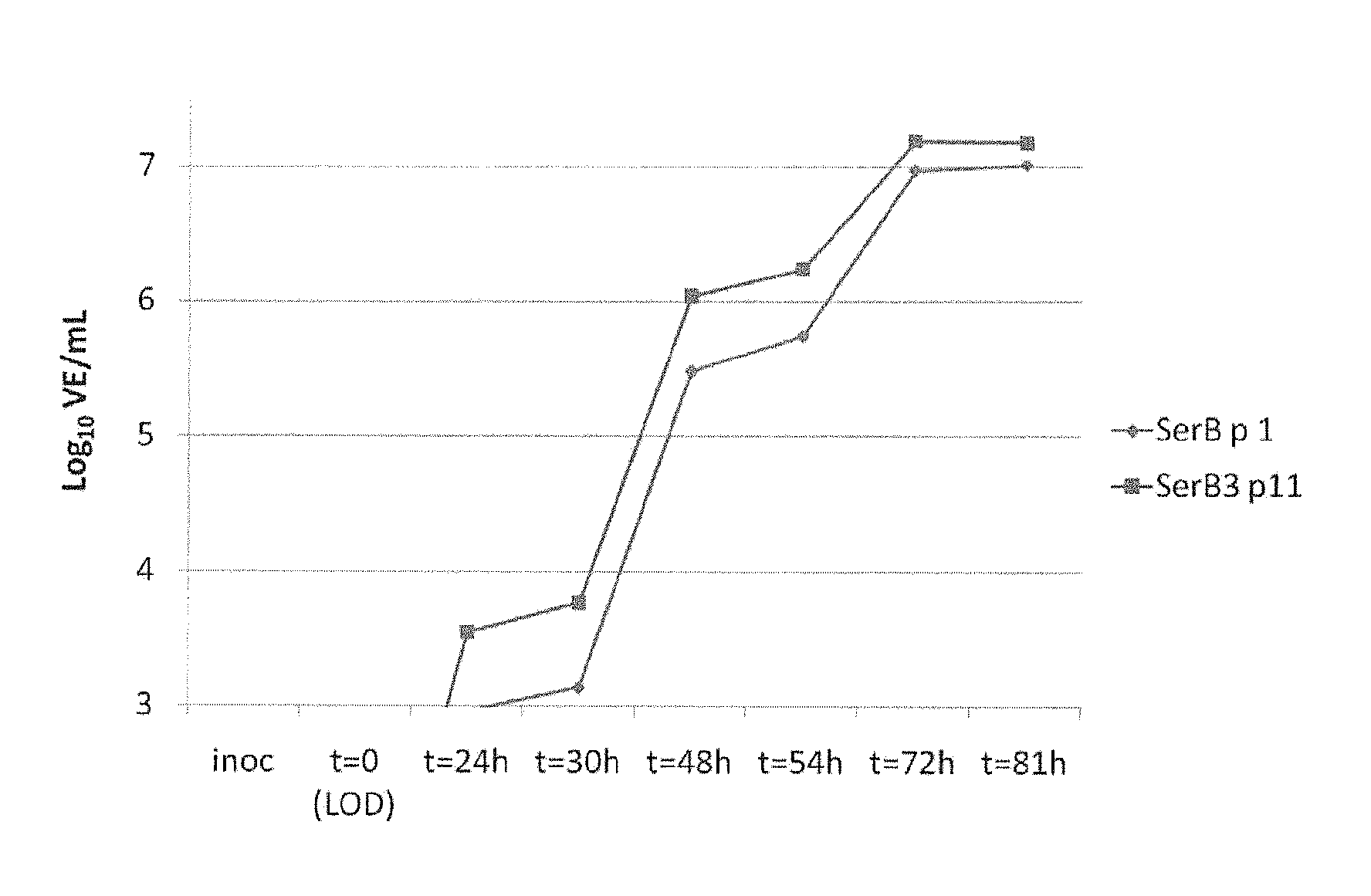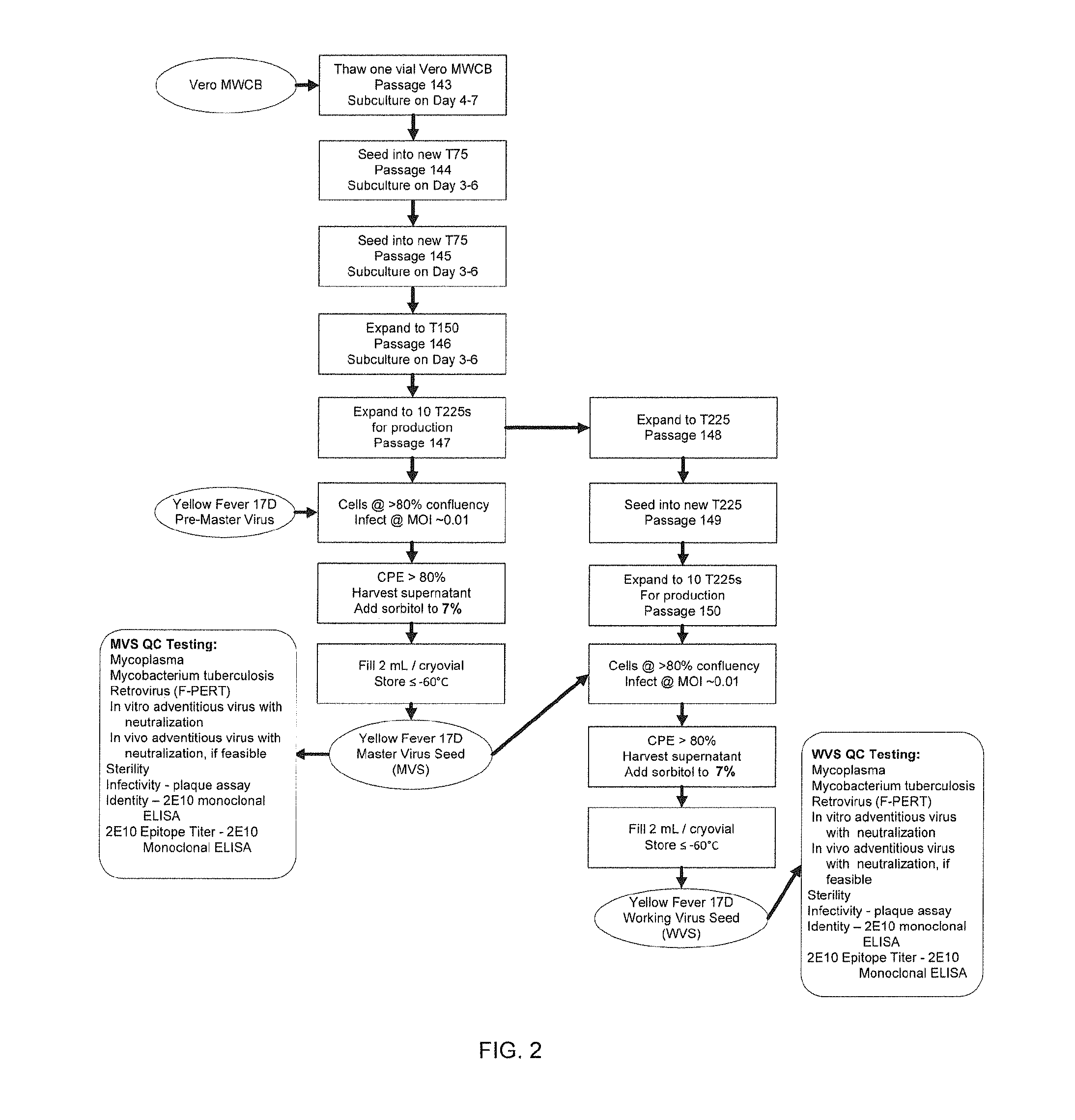High yield yellow fever virus strain with increased propagation in cells
a yellow fever virus and cell technology, applied in the field of high-quality yellow fever virus strain with increased propagation in cells, can solve the problems of unvaccinated humans, increased risk of yf infection, and epidemics of yellow fever in villages and cities, and achieves increased propagation in vero cells, increased yield, and the effect of increasing the number of cells
- Summary
- Abstract
- Description
- Claims
- Application Information
AI Technical Summary
Benefits of technology
Problems solved by technology
Method used
Image
Examples
Embodiment Construction
[0050]A description of preferred embodiments of the invention follows. It will be understood that the particular embodiments of the invention are shown by way of illustration and not as limitations of the invention. At the outset, the invention is described in its broadest overall aspects, with a more detailed description following. The features and other details of the compositions and methods of the invention will be further pointed out in the claims.
Overview of Approach and Benefits
[0051]The invention relates to compositions and methods for use in preventing Yellow Fever virus infection. Disclosed herein is a method of producing an inactivated Yellow Fever virus candidate, the method comprising the serial passage of the YF 17D virus (i.e., an “unadapted virus”) in certified African green monkey kidney cells (VERO) to increase the titer to yield a sufficient antigenic mass to induce a protective immune response and / or modify the nucleotide sequence of the viral genome. This method...
PUM
| Property | Measurement | Unit |
|---|---|---|
| temperatures | aaaaa | aaaaa |
| temperatures | aaaaa | aaaaa |
| volume | aaaaa | aaaaa |
Abstract
Description
Claims
Application Information
 Login to View More
Login to View More - R&D
- Intellectual Property
- Life Sciences
- Materials
- Tech Scout
- Unparalleled Data Quality
- Higher Quality Content
- 60% Fewer Hallucinations
Browse by: Latest US Patents, China's latest patents, Technical Efficacy Thesaurus, Application Domain, Technology Topic, Popular Technical Reports.
© 2025 PatSnap. All rights reserved.Legal|Privacy policy|Modern Slavery Act Transparency Statement|Sitemap|About US| Contact US: help@patsnap.com



